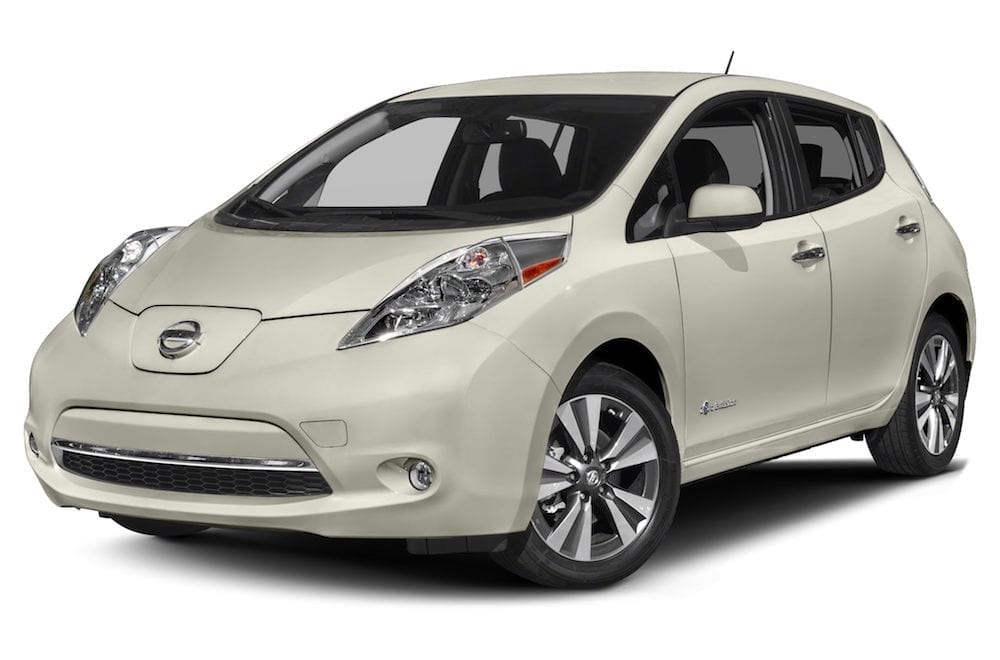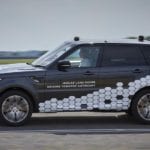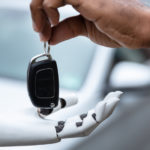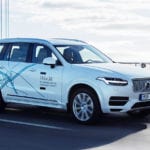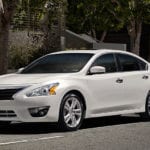Ahhhh, the race to the self-driving car finish line. While it’s not exactly in sight, that fact certainly hasn’t stopped every major automaker from trying to be the first to reach it. Now that electric and hybrid car technology have been mastered, the auto industry has hitched their wagon to a star – no doubt hoping that it will magically reposition itself closer within reach. Rather than sit, wait, and wish on that first star in the night sky, automotive brands have teamed up with tech companies to design and create autonomous driving cars. With so much competition circling around a driverless future, it was only a matter of time before seams would begin to unravel, and friendly competitors would start the mud slinging.
Nissan Unleashes Driverless Cars in the UK
The streets of London are home to the autonomous vehicle testing project currently being executed by Nissan. The all-electric LEAF is the self-driving Nissan prototype, which makes sense. With a company mission focused on a “zero-emission, zero-fatality future for mobility,” equipping the LEAF with self-driving tech is a no-brainer for the brand. Equipped with millimeter wave radar, cameras, a high-speed computer, and laser scanners, the LEAF stands a decent chance of gaining some real traction in the race to a driverless future.
Uber’s Self-Driving Ambitions Hit a Bump
As Nissan ramps up testing of the self-driving concept LEAF model, Uber and Volvo are applying the brakes on their own lofty driverless endeavor. It seems that Uber’s self-driving Volvo XC60s weren’t the only things missing a driver. The entire plan and execution of that plan seems to be void of any real driver, as more information surfaces about the California fiasco involving an overly inflated ego and entitlement attitude from the ride-share company.
Before I even get into just how disastrous the entirety of their San Francisco pilot testing program actually was, let’s take a look back at how the program was started. Uber not only failed to acquire the proper permits for testing driverless cars on public roadways in California, but were essentially warned ahead of their start date not to continue without proper paperwork. After this “warning,” Uber issued a statement on their website which essentially stated that they didn’t care, and hoped that lawmakers would understand the importance of their work. Without throwing myself into a fit of anti-Millennial rage, I will simply state that these pompous innovators had it coming.
Fast forward to today, when more information has emerged regarding Uber’s short-lived testing program in San Fran. Uber’s self-driving XC90 crossovers were caught running red lights, and the company was quick to blame human error, claiming that the operator was in control of the vehicle at the time. Further investigation points to the fact that Uber’s claim was an outright lie, and seems to only deepen the hole that the Silicon Valley startup has dug for itself.
Uber is also facing a lawsuit from Google’s Waymo for intellectual property theft regarding the design of lidars and cameras used on the autonomous XC90 designed by Uber.
In 2017, as Nissan works to solidify itself as an actual legitimate contender for self-driving cars, I can’t help but chuckle as Uber continues to solidify its own demise.
